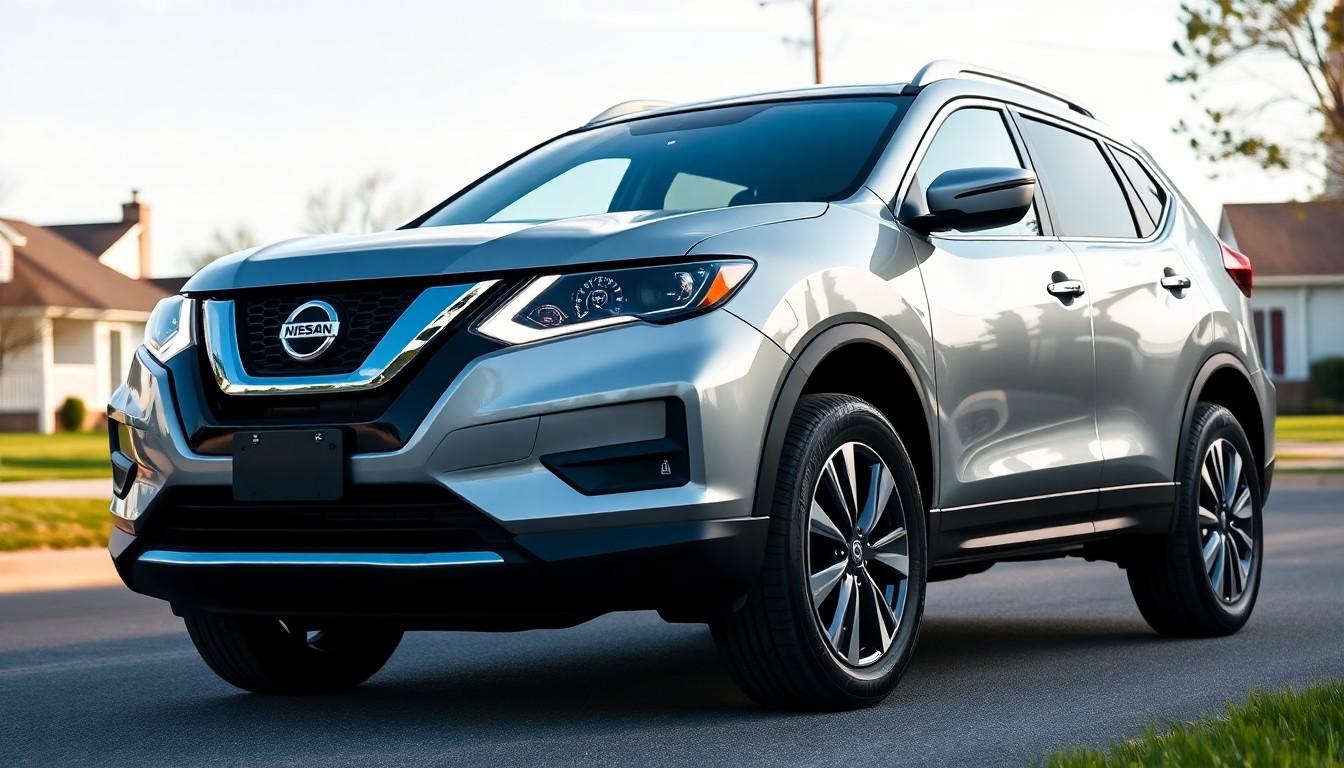Driving a Nissan Rogue with safety features like Forward Emergency Braking can provide invaluable peace of mind on today’s busy roads. But what happens when that warning light suddenly illuminates on your dashboard? It’s a situation many Rogue owners face, often causing unnecessary worry.
We’ve researched extensively to bring you everything you need to know about the Forward Emergency Braking light in your Nissan Rogue. From understanding what triggers this safety alert to the steps you should take when it appears, we’ll guide you through the essentials. Our comprehensive breakdown will help you determine whether you’re dealing with a minor sensor issue or something requiring immediate attention.
Understanding Nissan Rogue’s Forward Emergency Braking System
The Forward Emergency Braking (FEB) system in Nissan Rogue models is an advanced safety technology designed to prevent frontal collisions. This intelligent system uses radar sensors mounted at the front of the vehicle to constantly monitor the distance between your Rogue and the vehicle ahead. When the system detects a potential collision, it alerts the driver through both visual and audible warnings.
Nissan introduced this technology as part of their Safety Shield philosophy, which focuses on comprehensive protection for drivers and passengers. The FEB system operates in three progressive stages depending on collision risk severity. First, it provides a visual warning on the dashboard. Next, if the driver doesn’t respond, it adds an audible alert. Finally, in critical situations, the system automatically applies the brakes to reduce impact severity or potentially avoid a collision altogether.
The effectiveness of the FEB system varies based on several factors including vehicle speed, road conditions, and weather. Most Nissan Rogue models from 2017 and newer come equipped with this feature as either standard or optional equipment, depending on the trim level. Notably, the system doesn’t completely eliminate driver responsibility but serves as an additional layer of protection during moments of inattention or unexpected road hazards.
Recent Rogue models incorporate enhanced versions of this technology with pedestrian detection capabilities, expanding the safety net beyond just vehicle-to-vehicle scenarios. The system’s sensors can identify pedestrians in the vehicle’s path and initiate the same warning and braking sequence to prevent potential injuries. This improvement represents Nissan’s commitment to evolving their safety features to address real-industry accident scenarios.
How the Forward Emergency Braking Light Works in Nissan Rogue
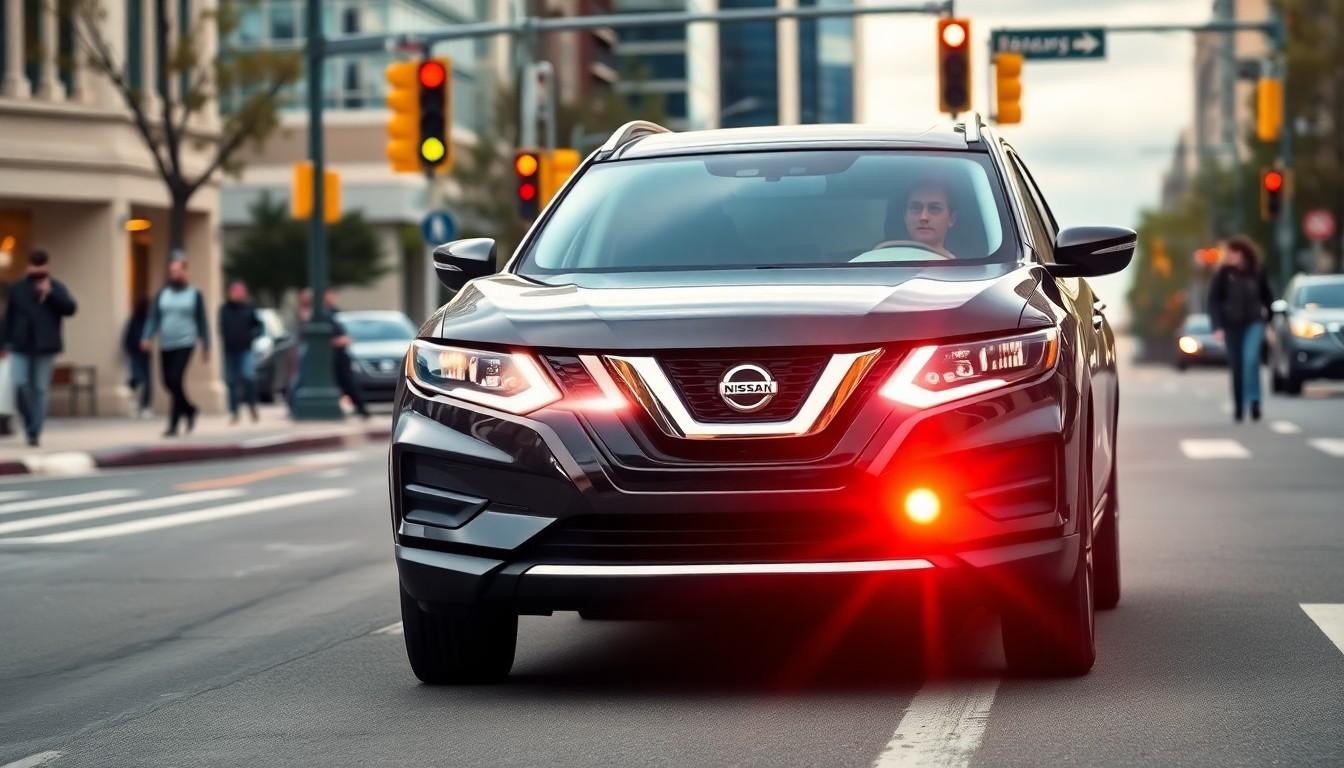
The Forward Emergency Braking (FEB) system in the Nissan Rogue represents an advanced safety feature designed to prevent or reduce the severity of frontal collisions. This intelligent system operates at speeds above 3 miles per hour, continuously monitoring the road ahead for potential obstacles including vehicles and pedestrians.
Visual Indicators and Warning Signals
Visual indicators accompany the FEB system’s detection process to alert drivers of potential collision risks. When the system identifies a risk involving another vehicle, an orange indicator flashes on the dashboard accompanied by an audible alert to gain the driver’s attention. For pedestrian detection scenarios, the system displays a red flashing indicator instead, signaling a different type of potential hazard. The FEB system escalates its response if the driver takes no action, issuing secondary visible and audible warnings before applying partial braking automatically. In truly imminent collision situations, the system activates harder braking to either avoid the collision entirely or significantly reduce its impact.
Sensor Technology Behind the System
Sensor technology forms the foundation of the FEB system’s effectiveness in the Nissan Rogue. A radar sensor positioned on the front of the vehicle constantly measures the distance between the Rogue and vehicles ahead in the same lane, providing precise proximity data. Complementing this radar, a specialized camera installed behind the windshield helps the system detect pedestrians and additional obstacles that might not register clearly on radar alone. This dual-sensor approach creates a comprehensive detection system that can identify various potential collision scenarios. The sensors feed data to the vehicle’s computer system, which analyzes the information and determines when warnings or automatic braking interventions are necessary based on closing speeds and distances.
Benefits of Forward Emergency Braking in the Nissan Rogue
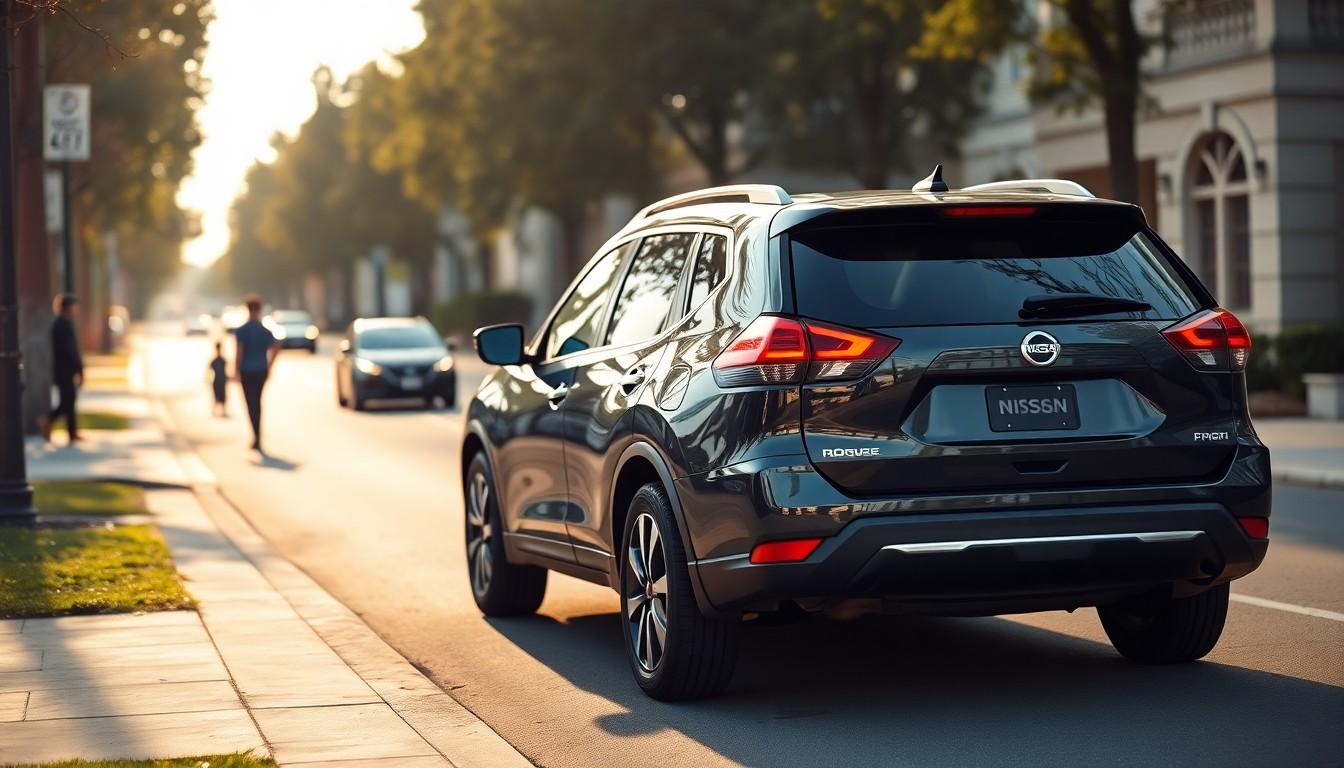
Forward Emergency Braking (FEB) in the Nissan Rogue offers substantial benefits beyond basic collision avoidance. This advanced safety system enhances driver protection through sophisticated sensing technology and automated response mechanisms.
Accident Prevention Capabilities
The FEB system employs radar sensors to constantly monitor the area in front of your Nissan Rogue. These sensors detect potential collisions with vehicles, pedestrians, and bicycles, creating a comprehensive safety net during your drives. When the system identifies a collision risk, it immediately alerts the driver through clear visual and audio warnings. Should the driver not respond to these initial alerts, the system activates light automatic braking as a secondary warning. In situations where collision risk increases without driver intervention, the FEB system applies full emergency braking automatically, helping to avoid accidents entirely or significantly reduce impact severity.
Insurance Benefits and Safety Ratings
Vehicles equipped with Forward Emergency Braking often qualify for reduced insurance premiums from many providers. This financial benefit stems from the proven ability of FEB systems to minimize accident frequency and severity, positioning your vehicle as a lower risk to insurers. The Nissan Rogue with FEB has earned the prestigious five-star safety rating from the National Highway Traffic Safety Administration (NHTSA). NHTSA evaluates vehicles based on rigorous criteria including Forward Collision Warning and Crash Imminent Braking capabilities. The Automatic Emergency Braking with Pedestrian Detection feature contributes significantly to the Rogue’s excellent safety performance, improving its ability to prevent frontal collisions in various driving conditions.
Common Issues with Forward Emergency Braking Lights

The Forward Emergency Braking (FEB) or Automatic Emergency Braking (AEB) system in Nissan Rogue models occasionally experiences problems that trigger warning lights on the dashboard. These issues range from simple sensor obstructions to more complex electrical malfunctions that require professional attention.
Sensor Issues
Sensor-related problems frequently cause FEB light illumination in Nissan Rogue vehicles. The radar sensor located behind the Nissan emblem on the front bumper often becomes blocked by dirt, ice, or debris, preventing accurate object detection. Misalignment of this sensor creates similar detection failures, triggering warning lights. Another crucial component, the front lane warning camera sensor module mounted on the rearview mirror, can malfunction and contribute to system errors.
Electrical Problems
Electrical faults represent another common source of FEB system failures. Blown fuses in the AEB-related circuits often cause the warning light to remain illuminated, making fuse inspection an essential first troubleshooting step. Faulty wiring connections throughout the system can also trigger persistent warning lights, interrupting the proper functioning of this safety feature.
Software Glitches
Software inconsistencies affect the AEB system’s reliability in many Nissan Rogue models. These glitches manifest as random activation of the emergency braking light or unexpected braking episodes without actual collision threats. Software issues have been particularly documented in 2017-2019 Rogue models, causing unexpected slowdowns or abrupt stops during normal driving conditions.
Mechanical Failures
Mechanical problems within the FEB system components can lead to persistent warning lights. Hardware failures, such as damaged sensor mountings or structural issues affecting the sensor positioning, create inaccurate readings that trigger system warnings. These mechanical issues often require professional diagnosis as they’re less obvious than sensor blockages or electrical problems.
System Activation Issues
Unexpected system activation creates concerning driving experiences for many Nissan Rogue owners. The AEB system sometimes engages without legitimate threats, causing the vehicle to slow down or stop unexpectedly. This unpredictable behavior has been reported across various model years, including those from 2017 to 2019, representing a important concern for affected drivers.
Troubleshooting Forward Emergency Braking Light Problems
Resolving FEB light issues involves several practical steps to identify and address the underlying cause. First, check for blown fuses in circuits connected to the AEB system, as this represents an easily fixable problem. Carefully inspect both the front radar sensor behind the Nissan emblem and the camera sensor on the rearview mirror for any obstructions or damage. Regular cleaning of these sensors removes accumulated dirt and debris that might interfere with their operation.
Access your dashboard settings to verify the AEB system configuration by handling to settings, then driver assistance, followed by emergency brake options. For persistent issues, professional diagnosis from a qualified mechanic or Nissan dealership provides the most comprehensive solution. Ensuring your vehicle’s software remains updated addresses known issues, as Nissan periodically releases updates to improve the FEB system’s functionality and reliability.
Maintenance Tips for Optimal System Performance
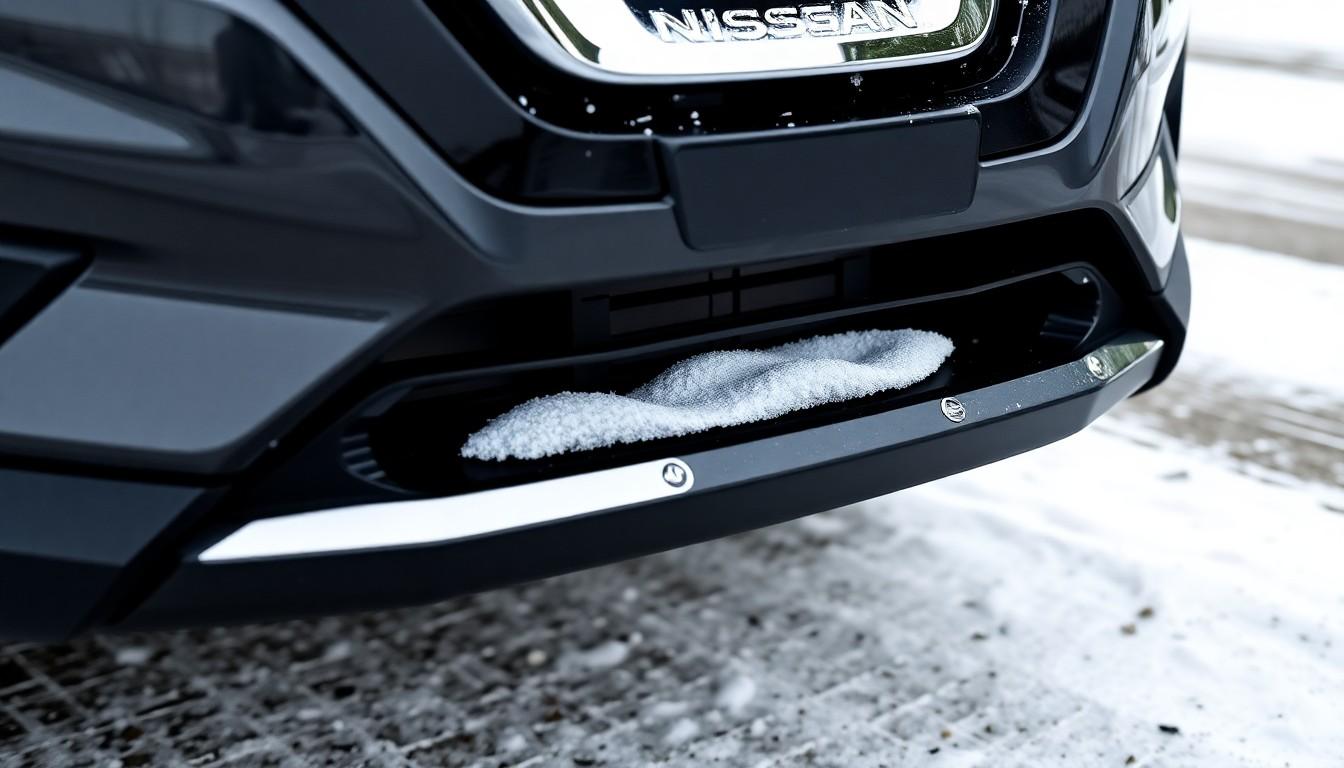
Cleaning and Inspection of Sensors
Radar sensors and cameras in your Nissan Rogue require regular cleaning to maintain optimal Forward Emergency Braking (FEB) system performance. These critical components are typically located behind the Nissan emblem on the front bumper and can become obstructed by dirt, ice, or road debris. A soft, damp cloth works effectively for gentle cleaning of these sensors without causing damage. Monthly inspections help ensure these components remain free from buildup that could compromise the system’s ability to detect obstacles.
Software and Firmware Updates
Your Nissan Rogue’s FEB system relies on up-to-date software to function correctly. Dealerships frequently release firmware updates that improve system functionality and fix known issues. Checking with your local Nissan service center every 6-12 months for available updates ensures your vehicle’s emergency braking capabilities remain current. Many software-related problems can be resolved through these regular updates, especially in 2017-2019 models known to experience occasional glitches.
Visual Inspections
Regular visual checks of your FEB system components help identify potential issues before they affect performance. Examine the front bumper area for any visible damage, cracks, or misalignment that might impact sensor positioning. The radar sensor housing should be securely attached and properly aligned with the vehicle’s front. Quarterly inspections can catch early signs of physical damage that might trigger warning lights or reduce system effectiveness.
Preventing Obstructions
Front bumper cleanliness directly impacts your FEB system’s reliability. Remove any decorative accessories, license plate frames, or aftermarket modifications that might block the sensors’ field of view. Winter driving conditions present particular challenges, so remove snow, ice, and road salt accumulation from the front bumper area before driving. Parking away from tall grass or areas with flying debris reduces the chance of sensor obstruction.
Driving Practices
Your driving habits significantly influence FEB system longevity and performance. Maintaining appropriate following distances prevents unnecessary system activations that could stress components over time. Driving cautiously in adverse weather conditions like heavy rain, fog, or snow acknowledges the system’s limitations in these environments. Avoiding routes with excessive road debris or unpaved surfaces helps preserve sensor integrity and prevents premature wear.
Professional Servicing
Annual professional inspections of your Nissan Rogue’s FEB system ensure optimal functionality. Authorized Nissan technicians can perform comprehensive diagnostic tests to identify potential issues not visible during routine visual checks. They’ll verify proper sensor calibration, especially important after front-end collisions or bumper repairs that might have altered sensor positioning. Professional servicing provides documentation of system health that’s valuable for warranty claims and when selling your vehicle.
Troubleshooting Common Issues
A constantly illuminated FEB warning light typically indicates a exact system issue needing attention. Check for blown fuses in the engine compartment fuse box, focusing on those labeled for the forward collision system. Inspect radar sensor connections for corrosion or looseness that might trigger warning lights. Some Rogue owners report temporarily clearing warning lights by turning the ignition off, waiting 30 seconds, and restarting the vehicle. Persistent warning lights require professional diagnosis to prevent compromised safety functionality.
Model Year Differences in Nissan Rogue FEB Systems
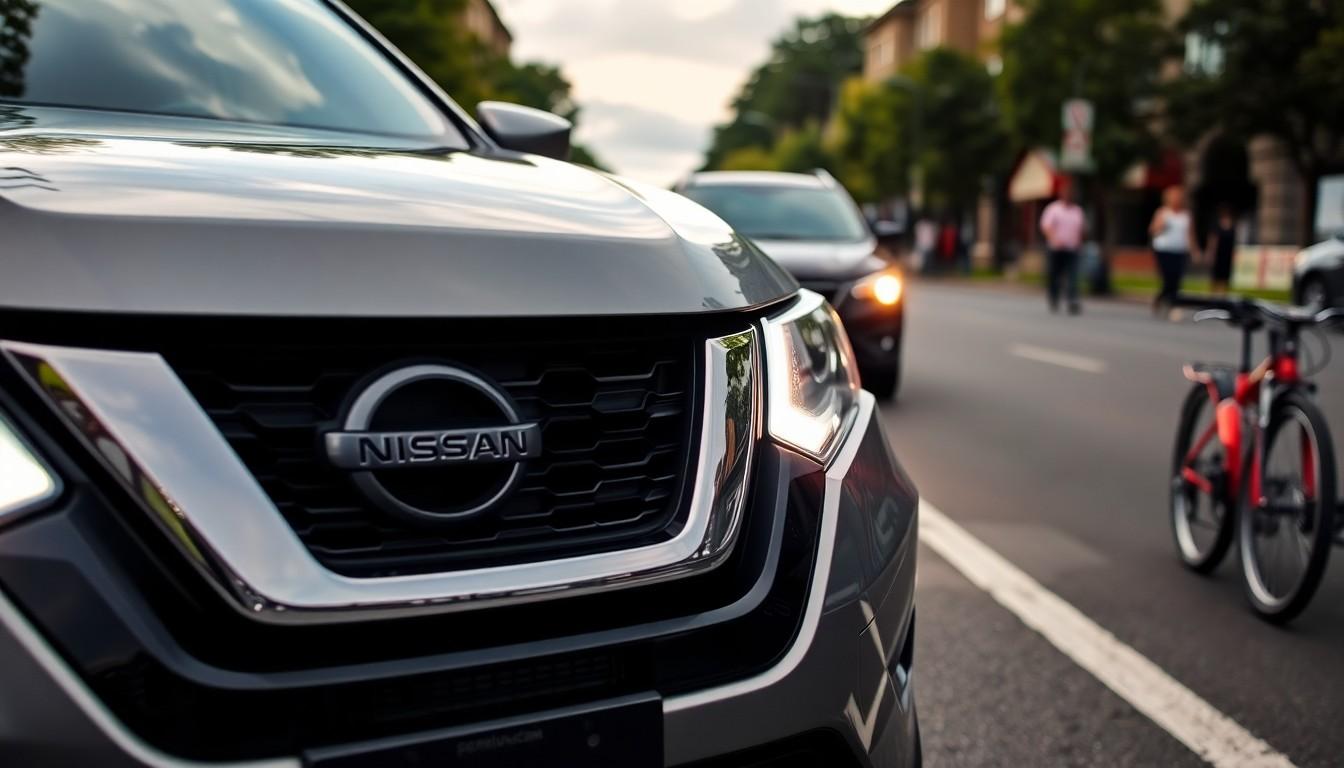
The Forward Emergency Braking system in Nissan Rogue vehicles has evolved across different model years while maintaining core functionality. Understanding these differences helps owners better interpret warning lights and system behaviors exact to their vehicle’s year.
2016-2017 Models
Nissan Rogue models from 2016 and 2017 come equipped with FEB featuring Pedestrian Detection technology. These vehicles use a dual-sensor approach combining radar and camera systems to identify both vehicles and pedestrians in your path. Orange warning indicators illuminate when the system detects vehicles ahead, while red indicators activate specifically for pedestrian detection. After initial warnings, the system applies partial braking if no driver action is taken, followed by stronger automatic braking in critical situations.
Later Model Enhancements
More recent Nissan Rogue models maintain the same fundamental collision avoidance capabilities but feature refined user interfaces. Navigation through vehicle settings differs slightly between model years, particularly in how drivers access the FEB toggle options. Many newer models require accessing the vehicle information display, selecting the driver assistance menu, and then locating the emergency braking toggle to turn the system on or off.
Consistent System Features
Regardless of model year, all Nissan Rogue FEB systems operate at speeds above approximately 3-5 mph (5 km/h). Every version uses radar sensors typically positioned behind the lower front grille or bumper to calculate distance to vehicles ahead. Camera systems mounted behind the windshield work along with radar to enhance detection accuracy, particularly for pedestrians. Initial warnings include visual alerts and audible signals, followed by automatic braking interventions if drivers don’t respond promptly.
Technology Improvements
Nissan has consistently upgraded the FEB system’s detection capabilities across model years. Earlier models focused primarily on vehicle detection, while later versions incorporate more sophisticated pedestrian recognition algorithms. Some of the most recent Rogue models have added bicycle detection capability, further expanding the safety net provided by this technology.
Comparing Nissan Rogue’s System to Competitors

Detection Capabilities
Nissan’s Forward Emergency Braking system offers comprehensive detection features that identify vehicles, pedestrians, and in some configurations, bicycles. Toyota’s Pre-Collision System provides similar functionality with its ability to recognize vehicles and pedestrians on the road. Honda’s Collision Mitigation Braking System also matches these detection capabilities, creating a safety net for drivers across these popular brands. Each manufacturer has invested in similar sensor technology to provide these protective features.
Activation and Alerts
The alert sequence in Nissan’s FEB mirrors what’s found in competing systems. Multiple warnings cascade to the driver before automatic braking begins, starting with visual alerts followed by audible warnings. Honda implements a comparable warning system in their vehicles, giving drivers several opportunities to react before the system intervenes. These graduated alert systems reflect industry-standard approaches to balancing driver autonomy with automated safety interventions.
Operational Speeds
Nissan’s system activates at speeds above approximately 3 mph (5 km/h), providing protection in most driving scenarios. Toyota’s Pre-Collision System begins functioning at slightly higher speeds, typically above 7 mph (11 km/h). This speed threshold difference might affect functionality in very slow-moving traffic situations where Nissan’s system maintains active protection. Most systems across manufacturers share this low-speed activation point to ensure coverage during common driving conditions.
System Limitations and Issues
Radar sensor malfunctions present challenges across all brands offering automatic braking technology. Nissan’s FEB system has experienced issues with unexpected braking and system deactivation, leading to several class action lawsuits about the faulty radar systems. These problems aren’t unique to Nissan, as sensor reliability remains a common limitation throughout the automotive industry. Environmental factors like heavy rain, snow, or dirt accumulation affect sensor performance across all manufacturer systems.
User Control
Drivers can toggle Nissan’s FEB system on or off through the vehicle’s settings menu, providing control over when the system operates. This customization option exists in most competing systems as well, giving drivers similar levels of authority over their vehicle’s autonomous features. Access to these controls typically appears in the vehicle’s dashboard interface or center console display, regardless of manufacturer. Ease of accessibility to these controls varies slightly between brands but serves the same functional purpose.
Conclusion
The Forward Emergency Braking system in your Nissan Rogue represents a important advancement in vehicle safety technology. Its multi-stage warning system combined with automatic braking capabilities provides crucial protection on today’s roads.
When the FEB warning light appears it’s important to address it promptly through regular maintenance checks diagnostic troubleshooting and professional assistance when needed. The system’s evolution across model years demonstrates Nissan’s commitment to continually improving this life-saving feature.
We’ve seen how the FEB system compares favorably with competitor technologies while offering unique benefits including potential insurance savings. By understanding and properly maintaining this system you’ll ensure it remains ready to protect you and your passengers when it matters most.
Frequently Asked Questions
What is Forward Emergency Braking (FEB) in the Nissan Rogue?
Forward Emergency Braking is an advanced safety technology designed to prevent frontal collisions. It uses radar sensors to monitor the distance between your Rogue and vehicles ahead, operating in three stages: visual warning, audible alert, and automatic brake application in critical situations. This system helps reduce impact severity or avoid collisions entirely while maintaining driver responsibility for vehicle operation.
At what speed does the FEB system operate?
The FEB system activates at speeds above 3 miles per hour. It continuously monitors for potential obstacles including vehicles and pedestrians while you’re driving. This low activation threshold makes it effective in both highway driving and low-speed environments like parking lots or traffic jams, offering comprehensive protection in various driving scenarios.
What triggers the FEB warning light on my dashboard?
Common triggers include sensor obstructions (dirt, snow, or debris blocking radar sensors), electrical problems (blown fuses or wiring issues), software glitches (particularly in 2017-2019 models), and mechanical failures. Regular inspection and cleaning of sensors can prevent many of these issues from activating the warning light.
How do I troubleshoot when the FEB warning light comes on?
Start by checking and cleaning the front radar sensors for obstructions like dirt, snow, or debris. Inspect related fuses using your owner’s manual as a guide. Restart your vehicle to reset the system. If the problem persists, visit a Nissan dealership to check for software updates or schedule a professional diagnosis for more complex issues.
How do I maintain the FEB system for optimal performance?
Regularly clean front radar sensors and cameras monthly, especially after driving in adverse weather. Schedule periodic software updates at your dealership. Visually inspect for physical damage to sensors. Keep the front bumper area clear of obstructions like license plate frames or aftermarket accessories. Consider an annual professional inspection to ensure proper system function.
How does Nissan’s FEB compare to competitors’ systems?
Nissan’s FEB system offers comparable functionality to Toyota’s Pre-Collision System and Honda’s Collision Mitigation Braking System. All three detect vehicles and pedestrians, provide multi-stage warnings, and apply automatic braking. Nissan’s system activates at lower speeds (above 3 mph) compared to Toyota’s, making it more effective in low-speed scenarios. All systems share similar environmental limitations.
Can the FEB system detect pedestrians?
Yes, newer Nissan Rogue models include pedestrian detection capabilities. The system identifies pedestrians in the vehicle’s path using radar and camera technology, initiating the same warning and braking sequence as it would for vehicles. Recent models have further enhanced this feature with improved recognition algorithms and added bicycle detection to provide comprehensive collision avoidance protection.
Can I customize or turn off the FEB system?
Yes, you can customize or temporarily disable the FEB system through your vehicle’s settings menu. Navigate to “Driver Assistance” or “Safety” in your dashboard menu, where you’ll find options to adjust sensitivity levels or disable the system. However, the system will automatically reactivate each time you start your vehicle as a safety measure.

